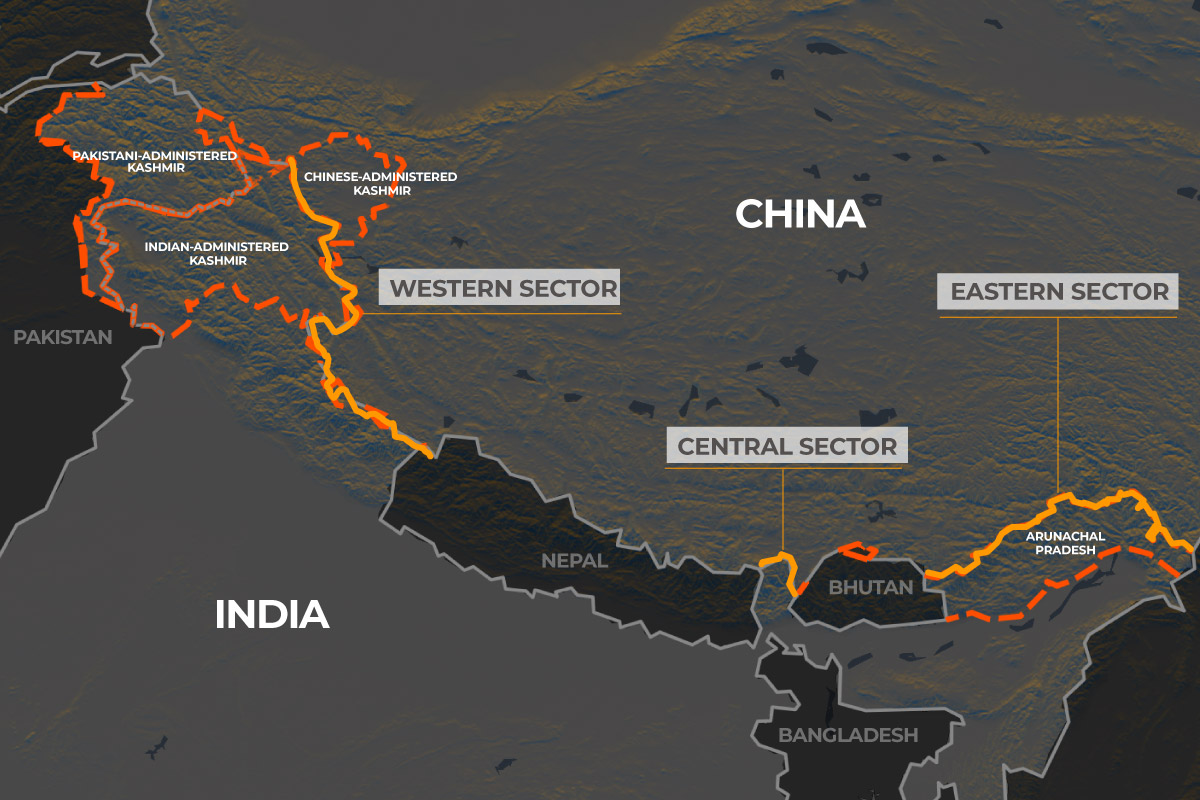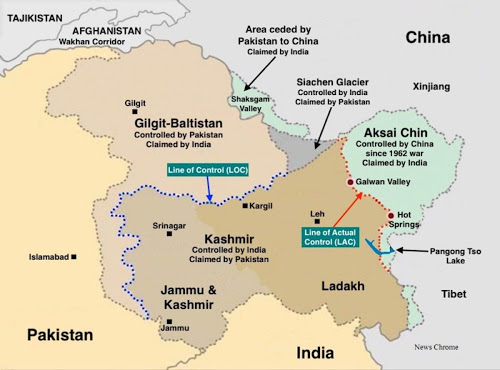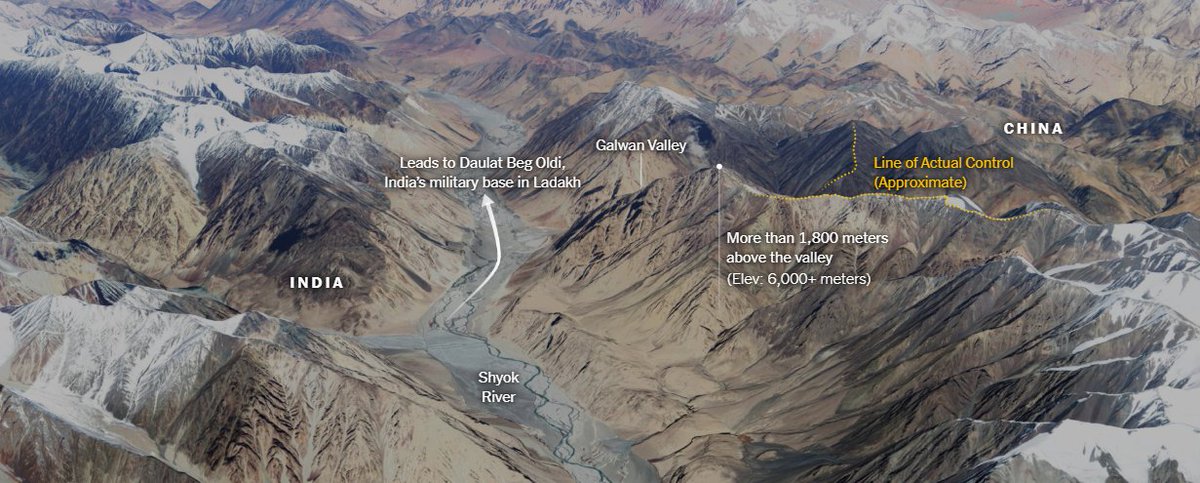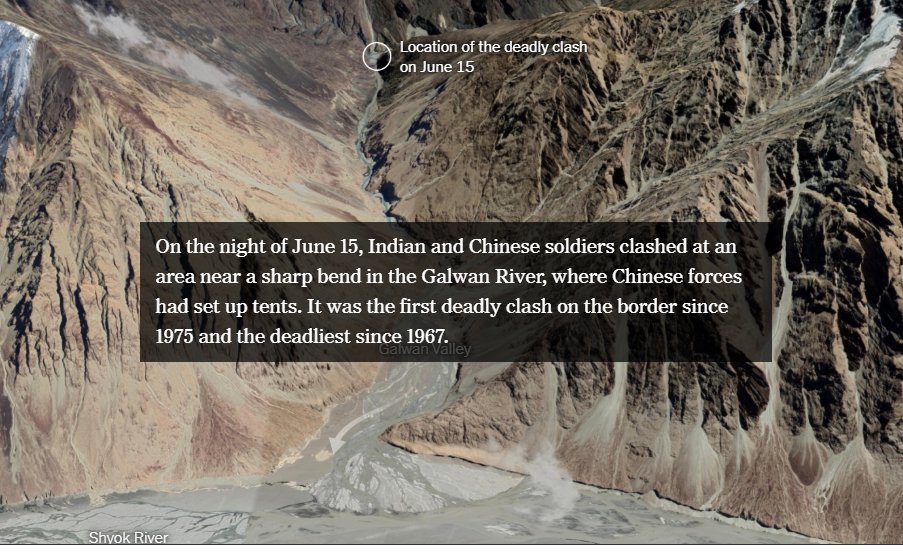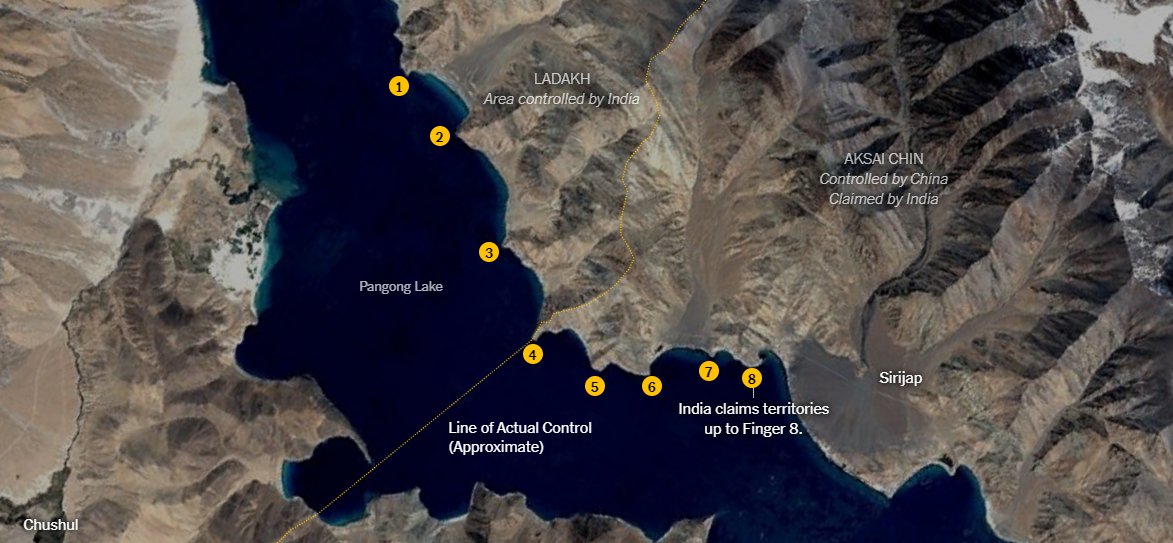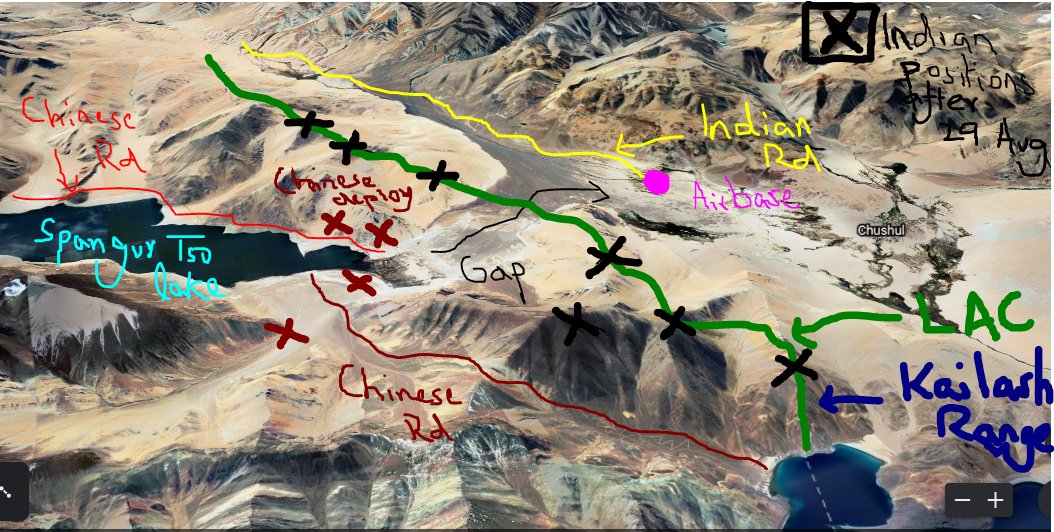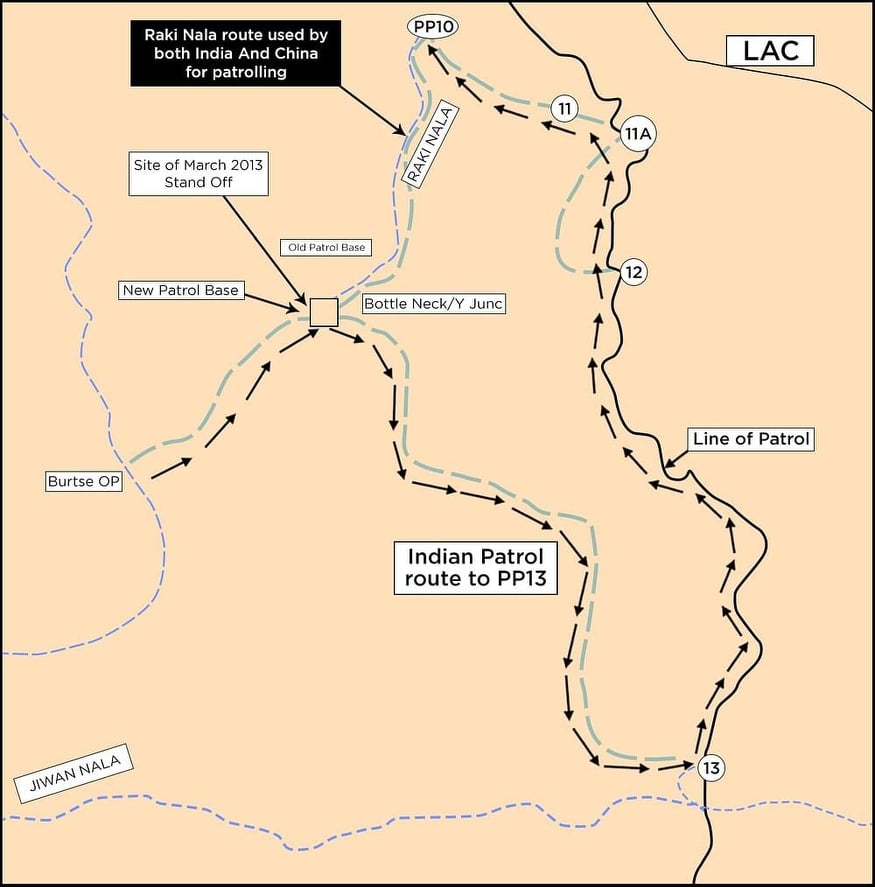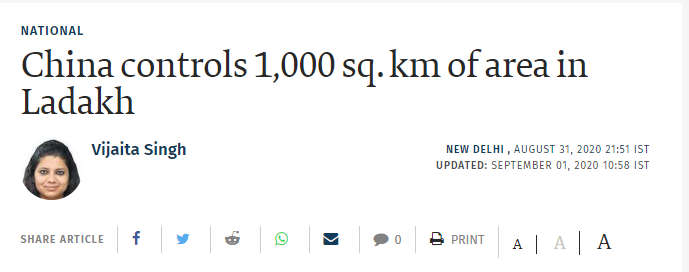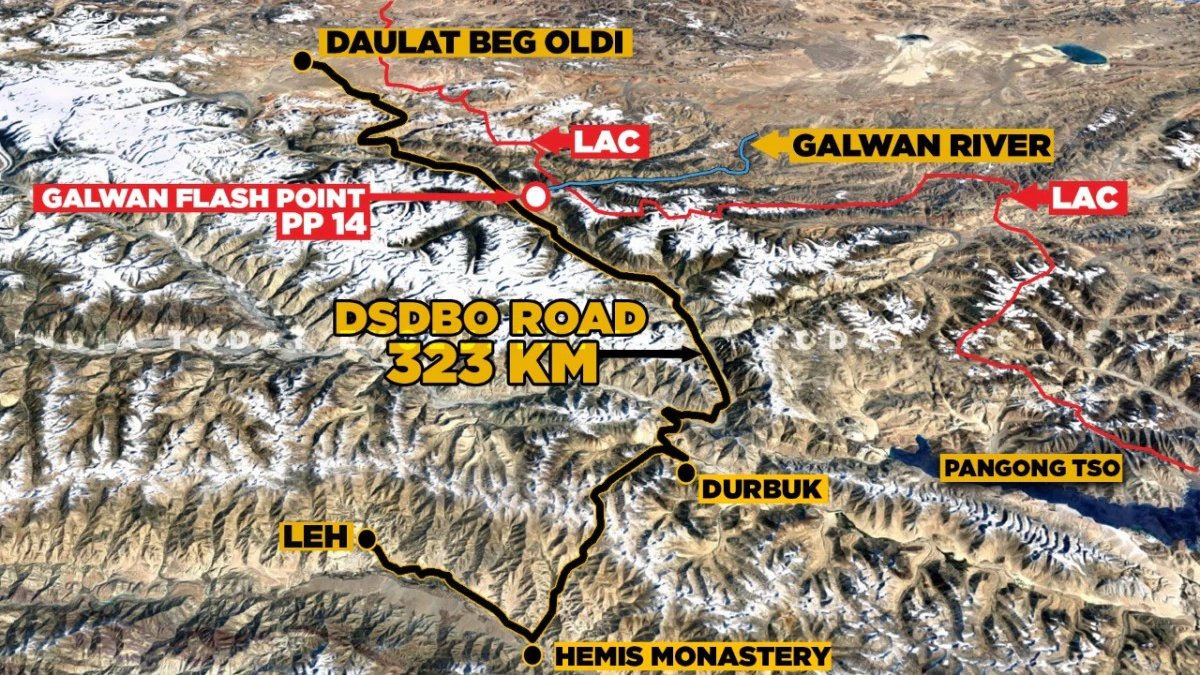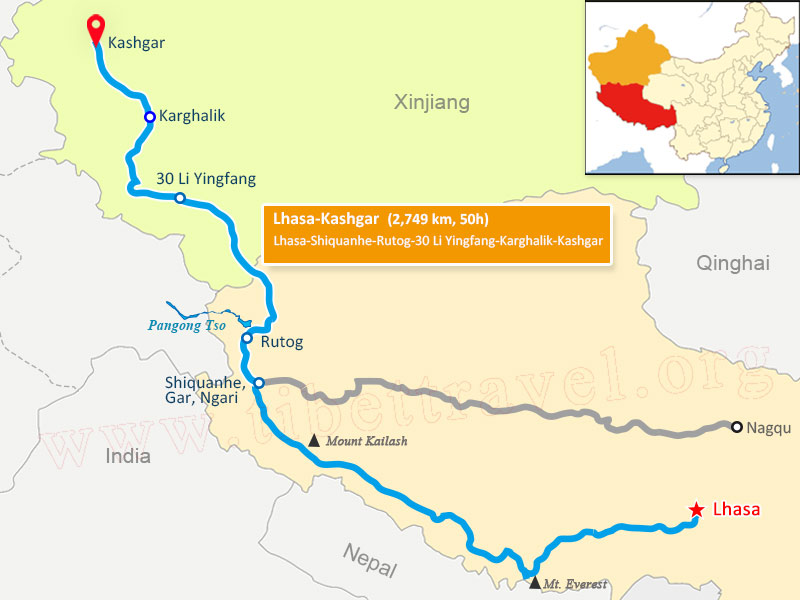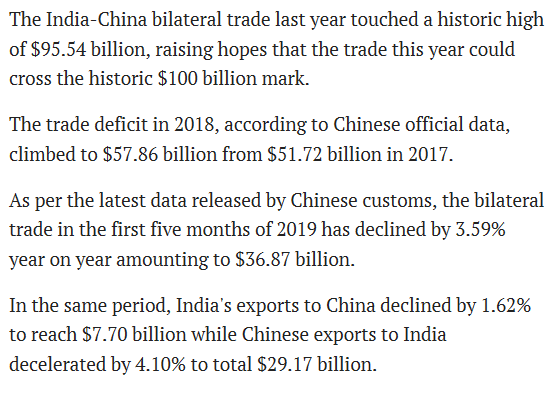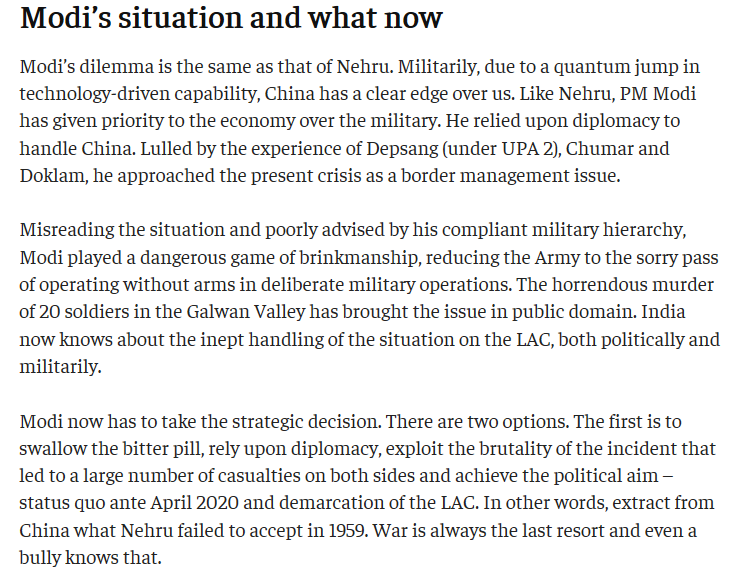China has seized the initiative in 4 different regions in Ladakh
1. Galwan Velley
2. Pangong Tso lake North Bank
3. Despang Plains
4. Hot Springs
1. Galwan Velley
2. Pangong Tso lake North Bank
3. Despang Plains
4. Hot Springs
In Galwan valley, an armed clash led to the death and capture of Indian soldiers including their CO.
Following pics explain the topography and nature of conflict in this terrain
Following pics explain the topography and nature of conflict in this terrain
In Pangong Tso, China has extended its control from finger 8 to finger 4 as the pic illustrates. In response to this, India has taken the Kailash ridgeline as negotiating tactic for an eventual quid pro quo
Despang plains have hardly been reported in Indian media where China has deterred India from patrolling in areas which it hitherto used to; thereby, effectively dispossessing India of 900 sq km.
Now, transitioning to the second part which pertains to the origins of conflict.
We can delineate the roots of conflict into 3 broad categories
1. Structural
2. Intermediate
3. Precipitating
We can delineate the roots of conflict into 3 broad categories
1. Structural
2. Intermediate
3. Precipitating
From a structural paradigm, as neo-realism explains, due to power asymmetry and US-Sino Cold War 2.0, India and China are bound to end up in a conflict. Systemic factors explain the inevitability of tension. Plus, India is the pivot of Washington's Indo - Pacific strategy.
In context of aforementioned assertions, China has employed its time tested strategy of "offensive deterrence" . What is this and when was this employed?
Modus operandi : Limited probe along contested territory to gauge enemy's reaction as well as serving as a deterrent for any
Modus operandi : Limited probe along contested territory to gauge enemy's reaction as well as serving as a deterrent for any
territorial aggrandizement on adversary's part.
When employed?
1. Taiwan strait crisis with US
2. 62 war with India
3. Clashes with USSR in 69 along Ussuri river
4. War with Vietnam in 79
5. Clashes with India along LAC 2020
When employed?
1. Taiwan strait crisis with US
2. 62 war with India
3. Clashes with USSR in 69 along Ussuri river
4. War with Vietnam in 79
5. Clashes with India along LAC 2020
Now moving onto the intermediate reasons.
There are two.
1. Indian hegemonic nationalism and irredentism by laying claims on Aksai Chin / Aug 5 actions
2. China's assertiveness on its One China Policy
There are two.
1. Indian hegemonic nationalism and irredentism by laying claims on Aksai Chin / Aug 5 actions
2. China's assertiveness on its One China Policy
After this, lets delve into the precipitating events. Again, there can be two.
1. India's infrastructure development in Ladakh by construction of DSDBO road and upgradation of Daulat Beg Oldie base. This development strengthens Indian Army in this region which consequently
1. India's infrastructure development in Ladakh by construction of DSDBO road and upgradation of Daulat Beg Oldie base. This development strengthens Indian Army in this region which consequently
threatens China's G219 which essentially is the core artery connecting Xingjiang and Tibet. In addition to this, look at the proximity of DBO base to Karakorum range.
2. Diversionary theory of war. As per proponents of this theory - Most of Western commentators - Xi is using
2. Diversionary theory of war. As per proponents of this theory - Most of Western commentators - Xi is using
this crisis to divert attention from his handling of COVID. I consider this to be preposterous as China hasn't really inflamed its public opinion.
Proceeding ahead, what about economic determinism? Chaps always claim that nations are driven by purely economic reasons for war.
Proceeding ahead, what about economic determinism? Chaps always claim that nations are driven by purely economic reasons for war.
So, are there any economic factors at play to lend credence to this assertion.
Trade is about to cross 100 B mark which is skewed in favor of China. Delhi is really concerned about this trade deficit and its concomitant industrial dependence upon China.
Trade is about to cross 100 B mark which is skewed in favor of China. Delhi is really concerned about this trade deficit and its concomitant industrial dependence upon China.
Moreover, this conflict is a failure of Modi's foreign policy. Modi wanted to be Bismarck. How ? Since Pakistan ( France ) is a perpetual enemy, so every effort must be expended to stop China ( Russia ) from joining the other camp. He failed. Actually expedited it.
Lastly, Pakistani think tanks are at pains to assert that it has been India which has tried to precipitate a conflict in order to pull America's chestnuts out of fire and get dividends in form of arms. It has been the other way around for last 20 years.
India has tried to play the field by maintaining the facade of its much touted strategic neutrality while America has given everything it needs. It seems that the strategic space is shrinking and this conflict will throw India into American embrace for good.

 Read on Twitter
Read on Twitter